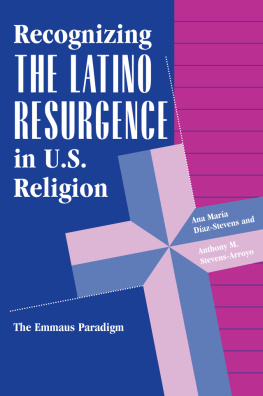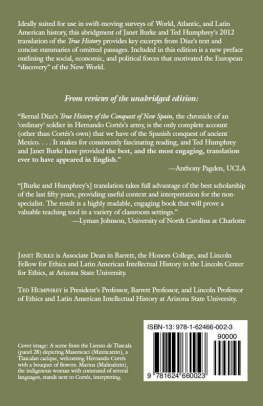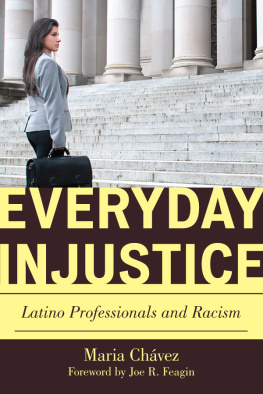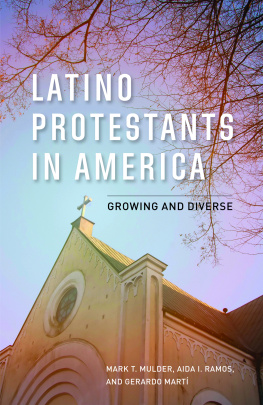Ana Maria Diaz-stevens - Recognizing The Latino Resurgence In U.s. Religion
Here you can read online Ana Maria Diaz-stevens - Recognizing The Latino Resurgence In U.s. Religion full text of the book (entire story) in english for free. Download pdf and epub, get meaning, cover and reviews about this ebook. year: 2019, publisher: Taylor & Francis, genre: Religion. Description of the work, (preface) as well as reviews are available. Best literature library LitArk.com created for fans of good reading and offers a wide selection of genres:
Romance novel
Science fiction
Adventure
Detective
Science
History
Home and family
Prose
Art
Politics
Computer
Non-fiction
Religion
Business
Children
Humor
Choose a favorite category and find really read worthwhile books. Enjoy immersion in the world of imagination, feel the emotions of the characters or learn something new for yourself, make an fascinating discovery.
- Book:Recognizing The Latino Resurgence In U.s. Religion
- Author:
- Publisher:Taylor & Francis
- Genre:
- Year:2019
- Rating:5 / 5
- Favourites:Add to favourites
- Your mark:
- 100
- 1
- 2
- 3
- 4
- 5
Recognizing The Latino Resurgence In U.s. Religion: summary, description and annotation
We offer to read an annotation, description, summary or preface (depends on what the author of the book "Recognizing The Latino Resurgence In U.s. Religion" wrote himself). If you haven't found the necessary information about the book — write in the comments, we will try to find it.
Recognizing The Latino Resurgence In U.s. Religion — read online for free the complete book (whole text) full work
Below is the text of the book, divided by pages. System saving the place of the last page read, allows you to conveniently read the book "Recognizing The Latino Resurgence In U.s. Religion" online for free, without having to search again every time where you left off. Put a bookmark, and you can go to the page where you finished reading at any time.
Font size:
Interval:
Bookmark:
John P. Reeder, Jr., Minian Smart, John F. Wilson,
and Robert Wuthnow, Advisory Board
The Emmaus Paradigm, Ana Maria Diaz-Stevens and
Anthony M. Stevens-Arroyo
Richard E. Wentz
Irving Hexham and Karla Poewe
Conflict and Authority in Early Latin Christianity,
Peter Iver Kaufman
Faith, Culture, and Strategic Choices,
Robert Booth Fowler and Allen D. Hertzke
Its Jewish and Pagan Context, Robert Doran
Union Theological Seminary
Anthony M . Stevens-Arroyo
Brooklyn College

711 Third Avenue, New York, NY 10017, USA
2 Park Square, Milton Park, Abingdon, Oxon OX14 4RN
Product or corporate names may be trademarks or registered trademarks, and are used only for identification and explanation without intent to infringe.
ISBN 13: 978-0-8133-2509-5 (hbk)
William Loperena, O.P.
Teacher, muse, brother in religion
God's voice to our people, from the peaks of island mountains and into the depths of patriotic conscience
Our one son, in the image and likeness of our union, alchemy of legacy and hope
- ii
- iii
- xxii
- xxiii
Anthony M. Stevens-Arroyo
February 2, 1997
Our Lady of Candelaria
Font size:
Interval:
Bookmark:
Similar books «Recognizing The Latino Resurgence In U.s. Religion»
Look at similar books to Recognizing The Latino Resurgence In U.s. Religion. We have selected literature similar in name and meaning in the hope of providing readers with more options to find new, interesting, not yet read works.
Discussion, reviews of the book Recognizing The Latino Resurgence In U.s. Religion and just readers' own opinions. Leave your comments, write what you think about the work, its meaning or the main characters. Specify what exactly you liked and what you didn't like, and why you think so.










